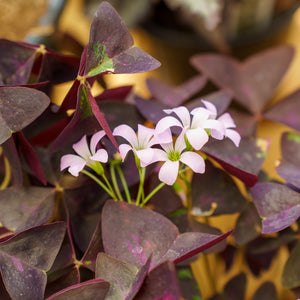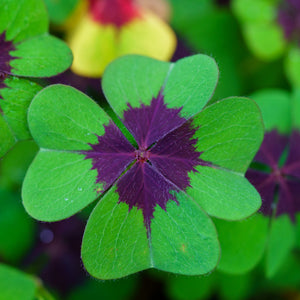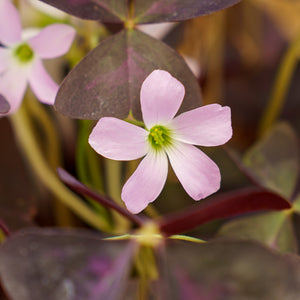The Oxalis Guide
Oxalis, commonly referred to as wood sorrel or false shamrock, is a distinctive genus of plants prized for its clover-like leaves and charming flowers. This diverse group includes both annual and perennial species, many of which are grown for their ornamental foliage and ability to thrive indoors or in shade gardens. Oxalis can range in appearance from delicate green species to striking purple-leaved varieties like Oxalis triangularis.
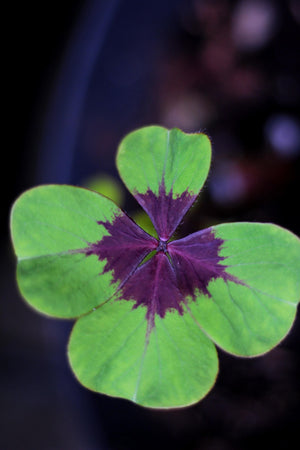
About
Oxalis is a genus of over 800 species distributed across the globe, particularly in South America, Africa, and temperate regions of North America. It belongs to the Oxalidaceae family and is known for its three-parted leaves, which often fold up at night or in dim light. Some species are treated as ornamentals, while others—like Oxalis oregana—are native groundcovers with ecological significance.
- Oxalis triangularis is a popular houseplant with deep purple, butterfly-shaped leaves and pale pink blooms.
- Oxalis 'Iron Cross' features green foliage marked with deep burgundy centers and is often grown for St. Patrick’s Day.
- Oxalis oregana, or redwood sorrel, is a hardy native species that thrives in shady, moist woodland environments.
- Oxalis bicolor and 'Lavender' are grown for their pastel blooms and graceful appearance.
- Oxalis vulcanicola 'Lucky' is a trailing, golden-leaved variety ideal for hanging baskets and containers.
While often confused with clover, oxalis is a distinct plant with unique folding behavior and ornamental appeal.
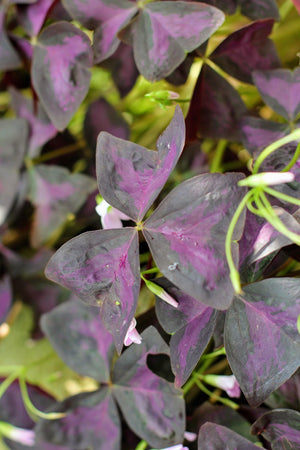
PLANTING
Oxalis is adaptable and can be grown both indoors and outdoors depending on the species:
- USDA Hardiness Zones: Hardy perennials in Zones 6–10, depending on variety. Treated as annuals or houseplants in colder climates.
- Soil: Prefers well-drained, lightly acidic to neutral soil rich in organic matter.
- Sunlight: Bright indirect light to part shade is ideal. Oxalis triangularis tolerates indoor lighting well, while native species like O. oregana do best in dappled shade.
- Spacing: Space 6–12 inches apart, depending on mature size.
- Planting Time: Plant tubers in spring once the risk of frost has passed, or year-round indoors.
When planting bulbs or rhizomes, place them about 1 inch deep in soil and water lightly until growth emerges.
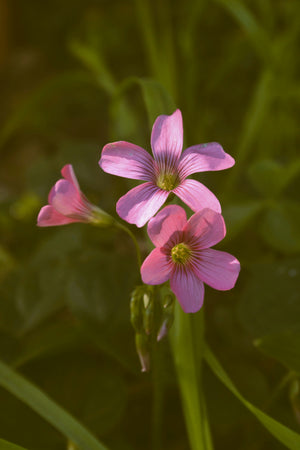
CARE
Oxalis is easy to grow with minimal effort. Many species go dormant in response to heat, cold, or drought, then resprout when conditions improve:
- Watering: Water moderately, allowing the top inch of soil to dry between waterings. Avoid soggy soil, which can rot bulbs.
- Fertilizing: Feed once a month during the growing season with a balanced liquid fertilizer diluted to half strength.
- Dormancy: If leaves yellow and die back, reduce watering and allow the plant to rest. Resume watering after several weeks to initiate new growth.
- Pruning: Trim dead or faded leaves to keep the plant looking tidy.
- Pests: Generally pest-free, though it may occasionally attract aphids or fungus gnats in moist soil.
Indoor oxalis may require a period of dormancy after blooming, during which it should be moved to a cooler, darker location.
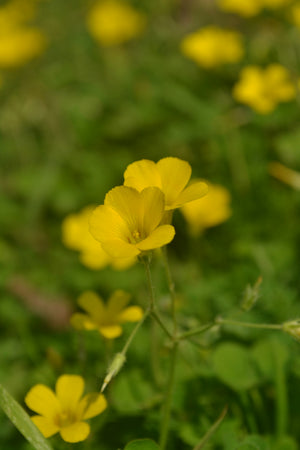
HOW TO USE
Oxalis adds delicate beauty and texture to gardens, containers, and interior spaces:
- Houseplant Feature: Grow Oxalis triangularis in decorative pots near bright windows for a dramatic indoor accent.
- Woodland Groundcover: Use Oxalis oregana in shade gardens or beneath trees to form a soft, carpet-like layer.
- Container Gardens: Combine trailing varieties like Oxalis vulcanicola 'Lucky' with ferns, coleus, or impatiens for colorful containers.
- Borders & Rock Gardens: Compact cultivars make charming additions to border edges and rockery plantings.
- Seasonal Displays: Use 'Iron Cross' or 'Lavender' in spring and early summer containers for festive foliage and flowers.
Oxalis pairs beautifully with hostas, heuchera, or spring bulbs like crocus or daffodils.
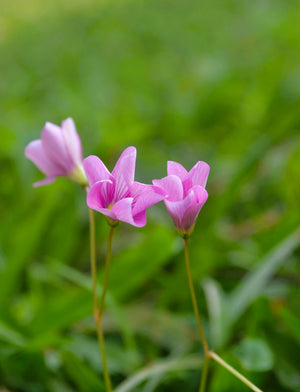
COMMON QUESTIONS
- Is oxalis edible? Many species, including Oxalis oregana, are edible in small quantities and have a sour, lemony flavor due to oxalic acid. However, large amounts can be toxic.
- Is oxalis poisonous to cats? Yes, oxalis contains oxalates and can be toxic to cats if ingested, potentially causing vomiting or drooling.
- Is oxalis poisonous to dogs? Yes, oxalis can also be toxic to dogs and may cause gastrointestinal irritation.
- How to propagate oxalis? Most varieties propagate easily by dividing bulbs or rhizomes. You can also root stem cuttings of some trailing types.
- How to care for oxalis? Provide bright indirect light, moderate watering, and a period of dormancy after blooming. Fertilize sparingly.
- Why is my oxalis drooping? Drooping may indicate overwatering, underwatering, or natural dormancy. Check soil moisture and lighting before adjusting care.
- How to grow oxalis? Plant bulbs shallowly in well-draining soil and provide indirect light and gentle moisture. Suitable for pots or garden beds.
- Is oxalis a perennial? Yes, many species are perennial, though they may go dormant seasonally depending on light, temperature, and moisture.
Conclusion
Oxalis brings charm, motion, and color to gardens and interiors alike. Whether you're growing a bold Oxalis triangularis in your home or carpeting a shaded garden path with Oxalis oregana, these plants offer striking foliage and easy care with a unique flair. Their sensitivity to light and seasonal rhythms adds personality to any space, making them both ornamental and endearing.
The Oxalis Collection
Sold Out
Sold Out
Sold Out

